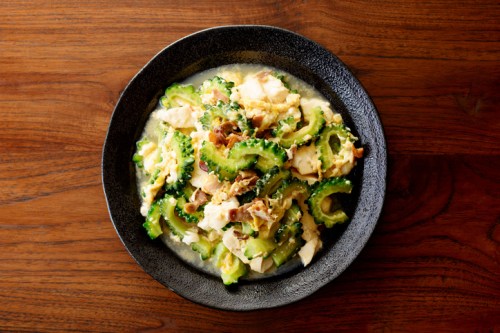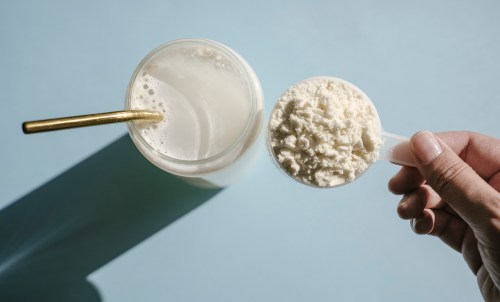When it comes to unlocking the secret to a longer, healthier life, there is a place on earth that seems to have found the master key. Nestled deep in the Ryukyu Islands of Southern Japan lies the region of Okinawa, home to the longest-living people in the world.
Experts in This Article
registered dietitian based in New York
Often referred to as “the land of immortals,” Okinawa is known for having the largest population of centenarians on the planet, which is why Dan Buettner, a National Geographic Fellow and a leading researcher on longevity, has named it one of the Blue Zones. (The Blue Zones are the five parts of the world that contain the highest concentration of the longest-living people: Okinawa, Japan; Ikaria, Greece; Sardinia, Italy; Nicoya Peninsula, Costa Rica; and Loma Linda, California.)
The Okinawans’ ability to live long, healthy lives far into their 100s can be attributed in part to the island also maintaining the world’s lowest rates of breast cancer, heart disease, stroke, and type 2 diabetes. While many factors contribute to an individual’s lifespan, it’s clear that the dietary and lifestyle habits of the residents of Okinawa and other Blue Zones play a significant role in their longevity.
As nutrition expert Asako Miyashita, RD explains, the traditional Okinawan diet is mostly plant-based, comprised of nutrient-dense whole grains, legumes, and fiber-rich vegetables that are high in carbs but low in added sugar and saturated fat. “Okinawans eat a moderate protein intake of tofu, fish, and some pork with a lot of carbohydrates that come from sweet potatoes, sea vegetables, wheat noodles, and island vegetables grown in the mineral-rich limestone soil,” says Miyashita.
One of the most nutritious of these island vegetables is goya, also known as bitter melon or bitter gourd. This tropical vine has a rich bitter flavor, a bumpy green rind, and powerful antioxidant properties. “The bitterness of bitter melon is due to an antioxidant named momordicine, which is a type of polyphenol that benefits longevity,” Miyashita says. According to Miyashita, the other compounds in bitter melon, charantin and cucurbitacins, work with momordicine to help lower cholesterol, balance glucose levels, reduce inflammation in the body, and lower your risk of cancer and other chronic diseases.
The abundance of bitter melon throughout Okinawa has made it a staple in the rich culinary heritage of the region. As versatile as it is nutritious, bitter melon can be prepared in a variety of ways. According to Miyashita, bitter melon is most commonly served in a dish known as gōyā chanpurū, a delicious and savory stir fry that’s considered the quintessential dish of Okinawan cuisine. Recipe developer and food blogger Namiko Chen of Just One Cookbook shares more background on this delicious, nutrient-rich recipe.
“Chanpurū—which means “something mixed”—stir fry dishes are very popular in Okinawan cooking and typically include a combination of tofu, goya, with some kind of vegetable, meat, or fish,” Chen says. Her recipe for gōyā chanpurū, Chen shares, includes island tofu, goya, bean sprouts, pork, egg, and bonito flakes as garnish. “When goya is stir-fried together with tofu and eggs, the bitterness is tempered and there is an unmistakable umami character to the dish.”
Though the recipe is simple to prepare, every single ingredient in it offers a bounty of of essential vitamins, minerals, and/or potent antioxidant and anti-inflammatory benefits. According to Miyashita, the bitter melon delivers an immune-boosting dose of vitamins A and C. “And as my mom always says, bitter foods are good for you,” Chen adds. The eggs, pork, and tofu supply vitamin D, vitamin B, zinc, and protein. In addition to protein and heart-healthy flavonoids, Miyashita says that the special island tofu used packs plenty of calcium and magnesium, too.
For the bitter melon beginner, Chen offers a few helpful shopping tips. “Bitter melon can be found at your local Asian grocery store or farmer’s market. When shopping, choose a gourd that is smaller in size, has a bright green rind with lots of bumps, and feels firm to the touch,” she says.
The traditional gōyā chanpurū is a great way to enjoy the benefits of bitter melon but a true chanpurū is all about mixing things up. Get acquainted with some of the other longevity-boosting Okinawan staple foods like purple sweet potato, daikon, and Chinese okra by tossing them into this deliciously healthy dish.
Read on for Chen’s full gōyā chanpurū recipe from Just One Cookbook below.
Gōyā Chanpurū from Just One Cookbook
Ingredients3 Tbsp katsuobushi (dried bonito flakes)1 bitter melon (around 8 ounces)1 1/4 tsp kosher or sea salt (divided)14 ounces medium tofu (momen tofu)6 slices pork belly, cut into small 1 1/2 inch pieces2 large eggs, beaten with a fork2 1/2 Tbsp neutral-flavored oil, such as vegetable, rice bran, or canola (divided)1/8 tsp freshly ground black pepper1 Tbsp soy sauce
Instructions1. Make your homemade katsuo dashi: Stir the katsuobushi (bonito flakes) into a measuring cup with 1/4 cup boiling water. Let it steep until you’re ready to cook. Right before you start stir-frying, strain and remove katsuobushi.
2. Prepare the bitter melon: Cut the bitter melon in half lengthwise. Using a spoon, scoop out the seeds and scrape off the inner white pith. Slice into 1/8-inch thickness. Sprinkle with 1 teaspoon of the salt and let stand for 10 minutes, then rinse the bitter melon with water and drain well. (You can also use a salad spinner for this.)
3. Press the tofu: Wrap the tofu with paper towel and place a heavy flat object (like a cutting board) on top of the tofu to squeezes out water. Once it has been sufficiently pressed, tear up the tofu into bite-size pieces with your hands.
4. Saute the tofu: Heat a large frying pan and add a tablespoon oil and lay tofu in one layer in the pan. Try not to touch or toss the tofu frequently. Cook until the tofu has been browned and the moisture has evaporated. Transfer to a plate.
5. Stir fry the bitter melon: Add another tablespoon of oil to the same frying pan. Add the bitter melon, sprinkle remaining 1/4 teaspoon kosher salt on it, and stir fry until almost cooked. Transfer to a plate.
6. Cook pork belly: Add a 1/2 tablespoon oil and the pork belly to the pan. Season with freshly ground black pepper. Stir fry until nice and golden brown.
7. Stir fry everything together and season: Add the bitter melon and the tofu back to the frying pan. Add katsuo dashi and soy sauce, and let the liquid evaporate while you toss to combine. Taste and add kosher salt and freshly ground black pepper if necessary. Add the beaten eggs and add to the frying pan. Shake the pan to cook the egg and once egg is no longer runny, turn off the heat.
8. Transfer to a plate and sprinkle more katsuobushi (bonito flakes). Enjoy!
You can keep the leftovers in an airtight container and store in the refrigerator for up to three days or in the freezer for a month.
Oh hi! You look like someone who loves free workouts, discounts for cutting-edge wellness brands, and exclusive Well+Good content. Sign up for Well+, our online community of wellness insiders, and unlock your rewards instantly.
Sign Up for Our Daily Newsletter
Get all the latest in wellness, trends, food, fitness, beauty, and more delivered right to your inbox.
Got it, you've been added to our email list.











